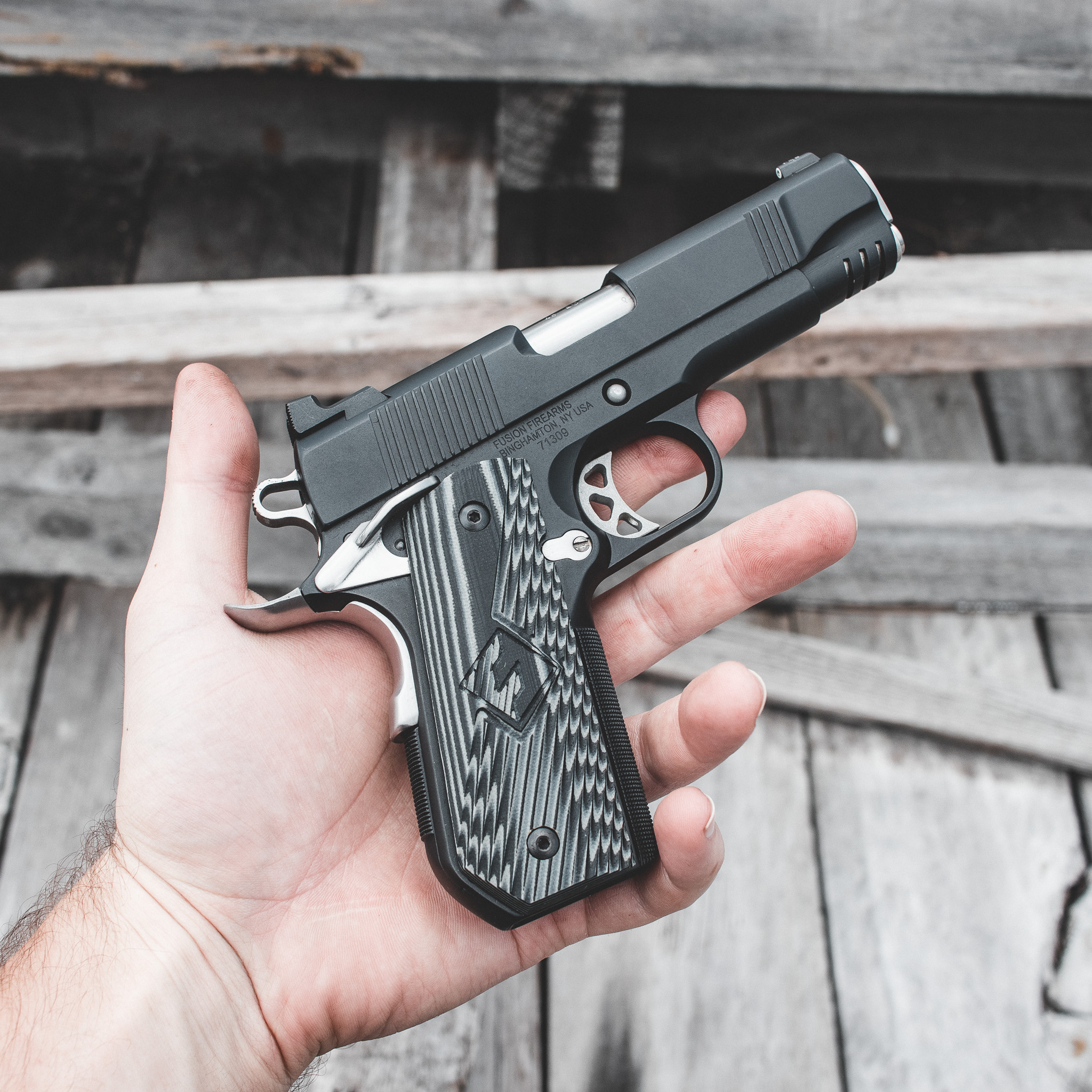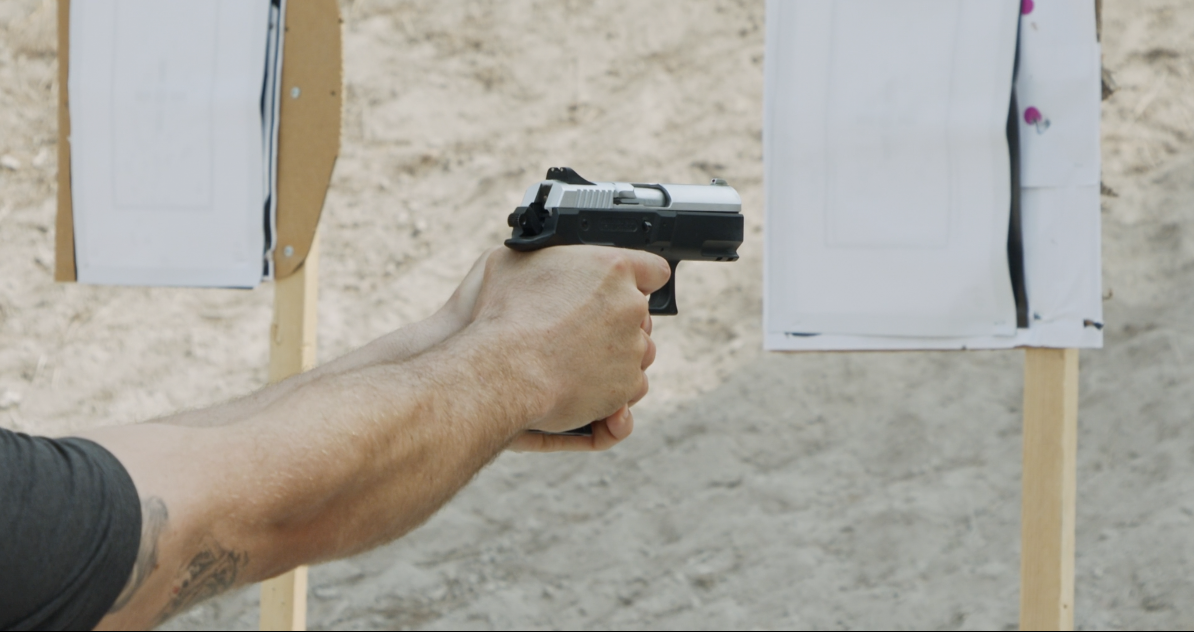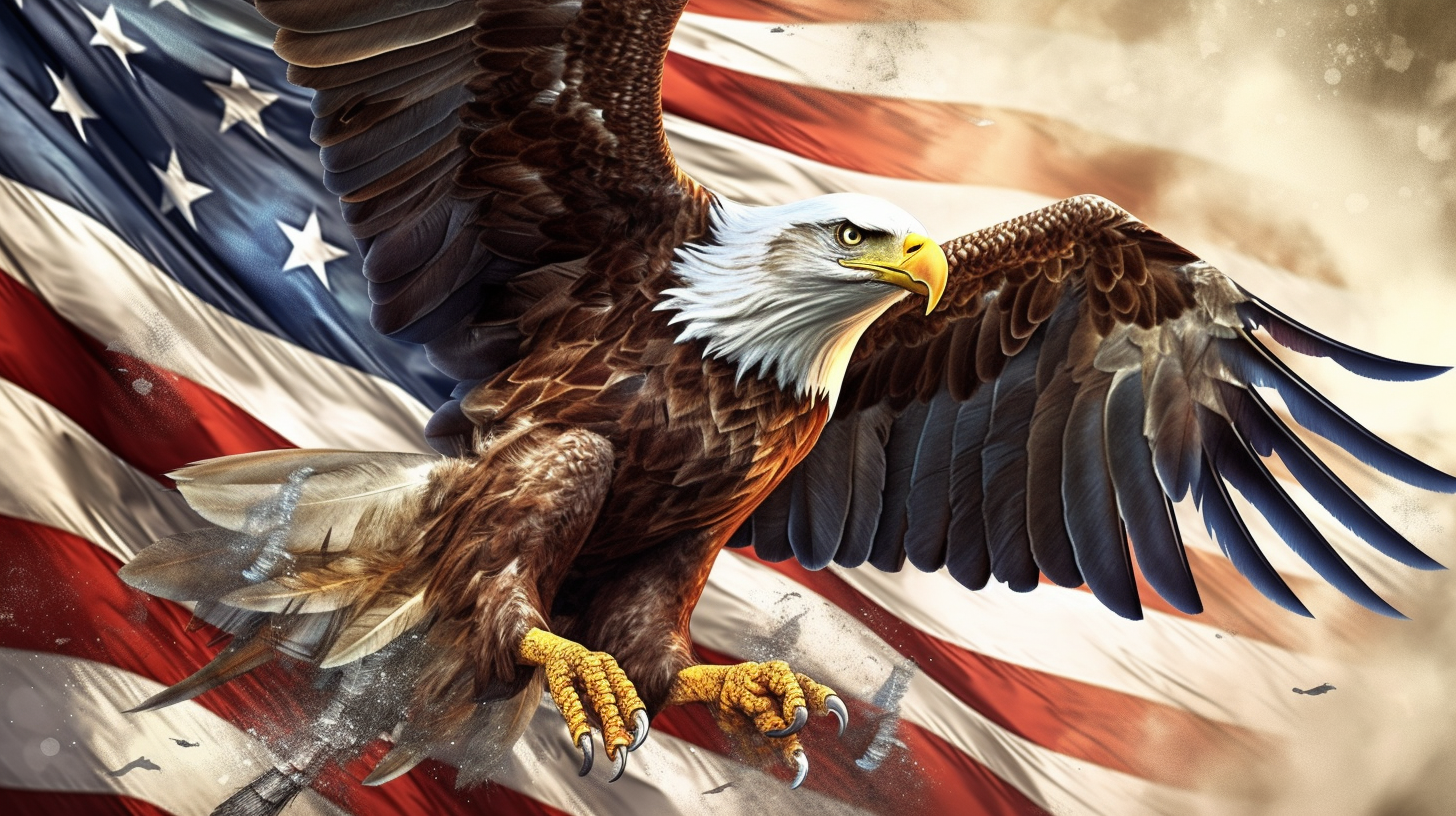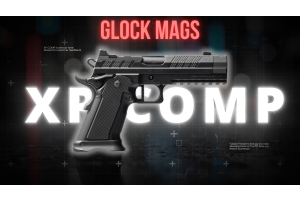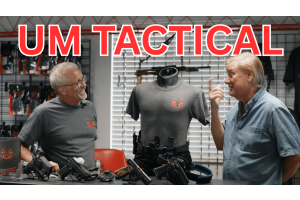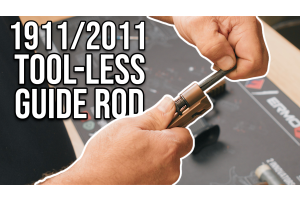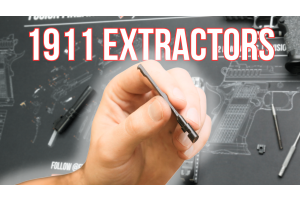Concealed Carrying a 1911: The Ultimate Guide for 2023
0%

The 1911 pistol, a classic and iconic firearm, has a rich history spanning over a century and a reputation for reliability and accuracy. As timeless as it is versatile, this legendary pistol has served in two world wars, numerous other conflicts, and in the hands of law enforcement and responsible armed citizens alike. In this comprehensive guide, we’ll take you through the essentials of concealed carrying a 1911, discussing everything from choosing the right model to mastering its unique features, essential gear, and training for effective concealed carry. By the end of this journey, you’ll be well-equipped to carry the 1911 with confidence and pride.
Short Summary
-
Choose the right 1911 for concealed carry based on size, caliber, brand and customizations.
-
Ensure proper gear is obtained including holsters, belts & spare magazines for effective concealed carry.
-
Familiarize yourself with relevant laws & regulations to practice responsible concealment of a 1911 pistol.
Choosing the Right 1911 for Concealed Carry
Selecting the perfect 1911 for concealed carry is no small feat, as there are numerous factors to consider, such as size, caliber, trusted brands, and customizations. It’s important to remember that the 1911 is a large and weighty carry gun, constructed of metal and designed as a military pistol over a century ago. However, its slim profile, accuracy, and suitability for a wide range of hand sizes make it a viable option for everyday carry. In this section, we will guide you through the process of choosing the right 1911 for your concealed carry needs.
When exploring the 1911 pistol market, it can be daunting for those new to the gun-buying process, especially when comparing them to striker fired guns. It’s essential to opt for reliable concealed carry handguns like the 1911 when it comes to personal safety. To help you navigate this process, we’ll discuss the differences between commander sized pistols and full-sized 1911s, caliber considerations, trusted brands, and customizations.
Commander-Sized Pistol vs. Full-Sized 1911
The full-sized 1911 could be a viable choice for those looking to carry concealed. However, the butt of a full-sized 1911 extends beyond the hand when held in the firing position, which can make it difficult to conceal compared to other guns. Alternatively, the commander-sized pistol features a.75” shorter barrel/slide, a shorter sight radius, and a slightly lighter weight than a full-sized 1911. For those seeking a more concealable option, the CCO 1911 configuration combines a Commander-length slide on an Officer-sized frame, offering a longer sight radius and more weight up front for a low-profile yet highly shootable design.
Both full-sized and commander-sized 1911s have their advantages and drawbacks, so it ultimately comes down to your personal preferences and needs. Full-sized 1911s may be easier to shoot accurately due to their longer sight radius and additional weight, but they can be more challenging to conceal. On the other hand, commander-sized pistols provide a more compact and concealable option, but with a slightly shorter sight radius and lighter weight. Consider your priorities and personal preferences when choosing between these two options.
Caliber Considerations
1911 pistols are available in various calibers, including.45 ACP, 9mm, 10mm,.40 S&W,.38 Super,.22LR,.357 Magnum, and 30 Luger. The.45 ACP caliber is a popular choice for 1911 concealed carry, offering a larger diameter bullet that can result in more significant damage compared to other prevalent self-defense options.
However, the 9mm and.38 Super calibers provide a greater magazine capacity and reduced recoil compared to the.45 ACP caliber. When deciding on the caliber for your 1911 concealed carry, consider factors such as your shooting experience, personal preferences, and the intended use of the firearm.
For those who prefer a larger caliber with more stopping power, the.45 ACP may be the ideal choice. However, if you prioritize capacity and manageable recoil, the 9mm or.38 Super calibers could be more suitable.
Trusted Brands and Customizations
As you embark on the journey to find the perfect 1911 for concealed carry, researching trusted brands and potential customizations for optimal performance is crucial. Some well-known 1911 manufacturers include Fusion Firearms, Wilson Combat, Springfield Armory, and Sig Sauer, among others. When selecting a 1911, it’s important to consider factors such as build quality, reliability, and the availability of aftermarket parts and accessories.
Customizations can greatly enhance your concealed carry experience, with options such as upgraded sights, triggers, grips, and other modifications available. For example, the Fusion Firearms Riptide-C comes with a carry cut frame and mainspring housing, font strap checking for a positive gripping surface, and genuine Novak sights for rapid target acquisition.
By selecting a reputable brand and investing in customizations tailored to your needs, you’ll be well on your way to finding the perfect 1911 for concealed carry.
Fusion Firearms Carry Selection
Fusion Firearms is another highly regarded manufacturer of 1911s for concealed carry purposes. They offer a range of features, including custom options, for their Freedom Series 1911’s. Additionally, Fusion Firearms provides a comprehensive selection of parts and accessories for the Liberty Series shotgun line and clones.
When considering Fusion Firearms for your 1911 concealed carry needs, be sure to research their various models, features, and customizations. By comparing their offerings with those of other trusted brands, you can make an informed decision on the best 1911 for your concealed carry needs.
Essential Gear for 1911 Concealed Carry
Equipping yourself with essential gear is crucial when it comes to carrying a 1911 concealed. Holsters, belts, and spare magazines all play a vital role in ensuring your safety and comfort while carrying a 1911. In this section, we’ll discuss the importance of each piece of gear and provide recommendations to help you make informed decisions.
From various holster types to quality belts and support systems, as well as spare magazines and carriers, we’ll guide you through the essential gear needed for effective and comfortable 1911 concealed carry.
Holster Options
Selecting the right holster for your 1911 concealed carry is essential, as it directly impacts both your comfort and the concealability of your firearm. The most common holsters for 1911 concealed carry are IWB (Inside the waistband), OWB (Outside the waistband), and shoulder holsters.
IWB holsters offer a high level of concealability due to their design to be worn inside the waistband of the trousers, making them a popular choice for iwb carry. However, they can be uncomfortable and challenging to draw from. OWB holsters, on the other hand, are developed to be worn outside the waistband of one’s pants, thus providing greater comfort than IWB holsters, but not as effective in terms of concealment.
Shoulder holsters offer comfort and ease of access but are not as adept at concealment as IWB or OWB holsters. Ultimately, the choice of holster will come down to personal preference and the specific needs of the individual carrying the 1911 concealed.
Quality Belts and Support
In addition to a suitable holster, a quality belt and support system are essential for comfortable and secure 1911 concealed carry. A sturdy gun belt will provide a stable platform for your holster, ensuring that your firearm remains in place and does not shift during movement.
It’s important to choose a belt designed specifically for carrying a firearm, as regular belts may not provide adequate support. By investing in a quality belt and support system, you’ll be better equipped for effective and comfortable 1911 concealed carry.
Spare Magazines and Carriers
Spare magazines and carriers are an essential part of 1911 concealed carry, as they ensure efficient reloading and provide additional ammunition in case of emergencies. The Achilles heel of the 1911 pistol is the abundance of subpar factory magazines. To avoid this issue, it’s important to invest in quality magazines from reputable brands such as Metal Form, Wilson Combat, Chip McCormick, Tripp Research, and MecGar.
Having spare magazines and carriers on hand will help you stay prepared and confident while carrying your 1911 concealed.
Mastering the 1911's Unique Features
The 1911 is renowned for its unique features, such as the grip safety and thumb safety, which set it apart from other concealed carry handguns. To carry a 1911 effectively, it’s crucial to become familiar with these features and how they function.
In this section, we’ll delve into the importance of mastering the 1911’s unique features for concealed carry. Understanding the grip safety and thumb safety mechanisms, as well as the concept of “cocked and locked” carry, will equip you with the knowledge needed to safely and confidently carry a 1911 concealed.
Grip Safety and Thumb Safety
The grip safety is located on the back of the handgun’s grip and is designed to prevent the gun from firing unless it is held in the proper firing position. The thumb safety is a pivoting lever or tab located on the frame of some semi-automatic pistols which blocks the trigger or firing pin and must be manually engaged or disengaged by the thumb for the gun to fire. Familiarity with the grip safety, thumb safety, and ambidextrous safety features on a 1911 for concealed carry is of utmost importance, as these are the active safety devices engaged when carrying a 1911 in Condition 1.
By becoming proficient in the use of the grip safety and thumb safety mechanisms, you’ll be better prepared to handle your 1911 safely and effectively in a concealed carry scenario. Practicing the engagement and disengagement of these safety features will help you develop muscle memory and increase your overall confidence in carrying a 1911 concealed.
Cocked and Locked Carry
Cocked and locked carry is a method of carrying a single-action pistol, such as a 1911, with the hammer cocked and the manual safety engaged. This is considered one of the safest ways to carry an only gun that has this feature, as the cocked hammer and engaged safety allow for a rapid response while also providing an extra layer of protection against accidental discharge.
Becoming proficient in the cocked and locked carry method is essential for the safe and effective use of a 1911 for concealed carry. This includes understanding how to properly engage and disengage the thumb safety, as well as practicing drawing and re-holstering the firearm while maintaining proper control of the safety mechanisms.
By mastering the cocked and locked carry method, you’ll be well-prepared to handle your 1911 with confidence and competence in a concealed carry situation.
Training and Practice for Effective 1911 Concealed Carry
As with any skill, practice is key to mastering the art of 1911 concealed carry. From defensive pistol drills to dry fire practice, it’s essential to continually hone your skills and develop muscle memory to ensure effective and safe concealed carry.
By engaging in regular practice and training exercises, you’ll become more confident and proficient in handling your 1911 concealed carry, making you better equipped to protect yourself and others in a self-defense situation.
Defensive Pistol Drills
Defensive pistol drills are exercises designed to improve shooting skills and prepare individuals for self-defense situations. These drills focus on accuracy, speed, target transitions, and decision-making under pressure. Popular drills include the Mozambique drill, the El Presidente drill, and the Bill Drill, which aid in developing muscle memory, increasing proficiency with the pistol, and enhancing overall defensive shooting abilities.
When engaging in defensive pistol drills, it’s important to prioritize safety, accuracy, and speed. Additionally, practice regularly and incorporate a variety of drills to ensure readiness for any situation. By incorporating defensive pistol drills into your training regimen, you’ll be better prepared to handle your 1911 concealed carry in a self-defense scenario.
Dry Fire Practice
Dry fire practice is the practice of shooting without live ammunition, and is essential for developing muscle memory and accuracy with the 1911. This type of practice can be conducted with a laser or dummy round, and is useful for honing target transitions, accuracy, and speed. Dry fire practice is especially beneficial for becoming familiar with the 1911’s distinct features, such as the grip safety and thumb safety.
Regular dry fire practice will help you become more comfortable with your 1911 and its controls, ensuring you are well-prepared to handle your firearm in a live-fire scenario. By incorporating dry fire practice into your training regimen, you’ll be able to confidently carry your 1911 concealed and respond effectively in a self-defense situation.
Legal Considerations and Responsible Carry
When carrying a 1911 concealed, it’s important to be aware of the laws and regulations in your area. Obtaining a concealed carry permit and understanding local laws are essential aspects of responsible carry practices. In this section, we’ll cover the legal considerations and responsible carry practices for 1911 concealed carry.
By familiarizing yourself with local laws and regulations, and obtaining the necessary permits, you’ll be better prepared to carry your 1911 concealed in a safe and responsible manner.
Obtaining a Concealed Carry Permit
The process of obtaining a concealed carry permit varies by state, but generally involves submitting an application to the local law enforcement agency, undergoing a background check, and completing a firearms safety course. It’s essential to review the requirements of your state’s concealed carry permit program to ensure you are in compliance with all applicable laws.
Carrying a concealed weapon, or having it carried concealed, is an important responsibility for armed citizens, as it requires an understanding of the applicable laws and regulations in one’s state, as well as the ability to make swift decisions in potentially hazardous situations. Furthermore, safe gun handling practices must always be observed.
By obtaining a concealed carry permit and adhering to the applicable laws, you’ll be better prepared to carry your 1911 concealed in a responsible manner.
Understanding Local Laws
Researching and understanding local laws and regulations regarding concealed carry and 1911 pistols is essential for responsible carry practices. This includes being aware of any restrictions on where concealed carry is permitted, the types of firearms allowed, and any other applicable laws. You can access resources for researching local laws on your state’s website or by contacting your local law enforcement agency.
By familiarizing yourself with local laws and regulations, you’ll be better equipped to carry your 1911 concealed in a safe and responsible manner.
Summary
Throughout this comprehensive guide, we’ve covered the essential aspects of 1911 concealed carry, from choosing the right model to selecting the appropriate gear, mastering the unique features, and engaging in training and practice. Armed with this knowledge, you are now well-equipped to confidently carry the legendary 1911 pistol concealed. Remember that with great power comes great responsibility, and by adhering to legal considerations and responsible carry practices, you’ll be prepared to protect yourself and others in any self-defense situation.
Frequently Asked Questions
Is 1911 a good concealed carry?
The 1911 is a great choice for concealed carry. It is renowned for its durability and balance, making it reliable and easy to shoot accurately. With proper practice, the sights of a 1911 will become second nature, providing a reliable option for self-defense.
Is carrying a 1911 cocked and locked safe?
Carrying a 1911 in “condition 1”, cocked and locked, is a safe and commonly recommended method of carrying this semi-automatic pistol. This is because it is the fastest way to get the gun into action when needed.
What are the key factors to consider when choosing a 1911 for concealed carry?
When choosing a 1911 for concealed carry, size, caliber, reputable brands and available customization should all be taken into account.
What are the advantages of the .45 ACP caliber for 1911 concealed carry?
The.45 ACP caliber offers excellent stopping power for concealed carry applications, featuring a larger diameter bullet that can result in more significant damage compared to other self-defense options.
This makes it a great choice for those looking for a reliable and effective self-defense option. It is also popular among law enforcement and military personnel due to its accuracy and stopping power.
What types of holsters are available for 1911 concealed carry?
The most common holsters for 1911 concealed carry are IWB, OWB, and shoulder holsters.








